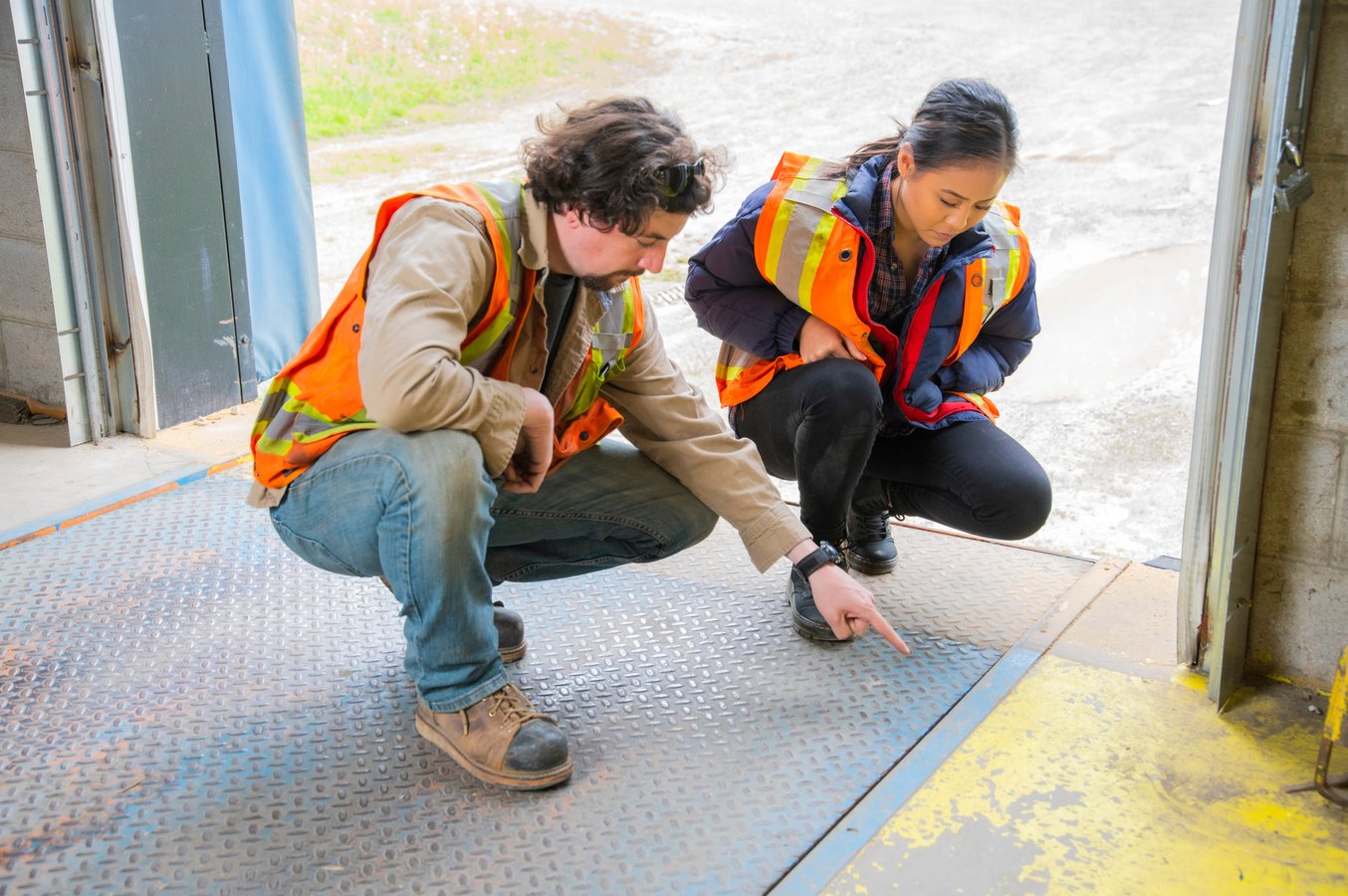
As the fall season continues, safety around the loading dock becomes even more critical. Wet weather, shorter days, and increased activity can turn routine tasks into potential hazards. That’s why this month’s In the Safety Zone focuses on fall-specific dock safety — including how to prevent slips, avoid collisions with fixed objects, and use the GOAL method to stay safe.
Watch Your Step: Preventing Slips, Trips, and Falls
Loading docks can become especially hazardous this time of year. Rain, fallen leaves, and changing temperatures create slippery surfaces that increase the risk of slips and falls. Uneven dock edges, poor lighting, and cluttered work areas can make conditions even worse.
To stay safe:
-
Keep the dock area clear of debris, leaves, and unnecessary equipment.
-
Wear slip-resistant footwear to maintain traction on wet surfaces.
-
Use extra caution when stepping on or off the truck or dock, especially in wet or icy conditions.
-
Take your time — safe dock operations start with you.
By staying alert and addressing these fall-specific hazards, you can reduce your risk of injury and help ensure safe dock operations for everyone.
Avoiding Fixed Objects at the Dock
Fixed objects such as dock walls, barriers, and equipment can pose serious risks during loading and unloading. Collisions can damage your truck, trailer, or equipment, leading to costly repairs and delays.
To avoid these hazards:
-
Approach the dock slowly and carefully to ensure proper alignment.
-
Use mirrors to monitor blind spots.
-
Check for misplaced equipment, debris, or other obstructions before backing in.
-
Communicate with others working at the dock to confirm a clear path.
The GOAL Method: Get Out And Look
The GOAL method — Get Out And Look — is one of the simplest and most effective ways to prevent dock-related accidents. Whether backing into a dock or positioning a trailer, taking a few extra moments to inspect your surroundings can make all the difference.
Here’s how to put GOAL into practice:
-
Exit your truck and inspect the dock area for hazards such as uneven surfaces or obstructions.
-
Confirm your truck or trailer is properly aligned with the dock.
-
Check that loading equipment, like dock plates or forklifts, is in safe working condition.
-
Communicate with dock workers to coordinate safe loading and unloading procedures.
By following GOAL, you improve situational awareness, reduce risk, and help maintain a safe working environment during the fall season and beyond.
Safety Starts With You
Every safe delivery starts with a driver who’s alert, aware, and proactive. As weather conditions shift and loading docks get busier, a little extra caution goes a long way.
Take time to clear your work area, check your surroundings, and always Get Out And Look. Together, we can keep every dock — and every driver — safe this season.